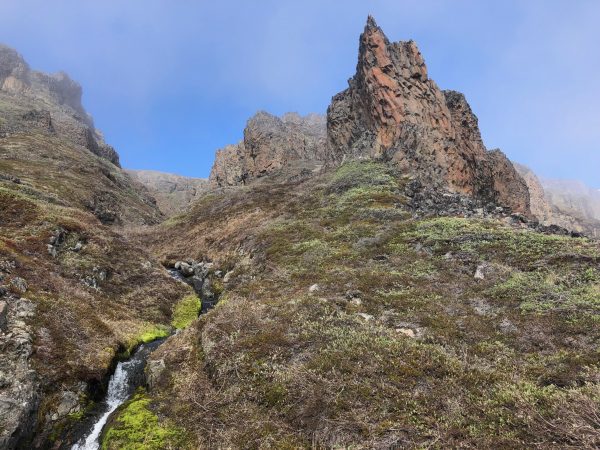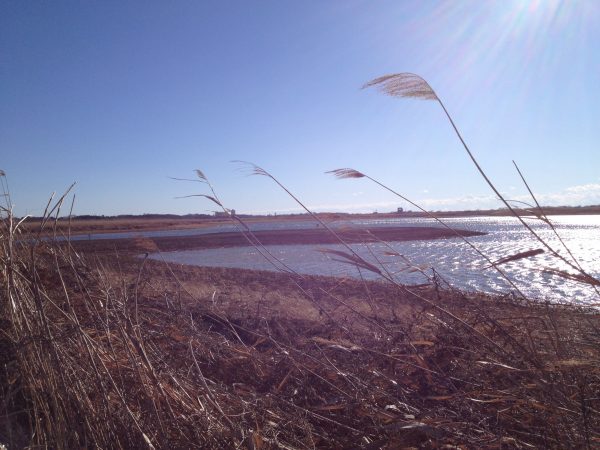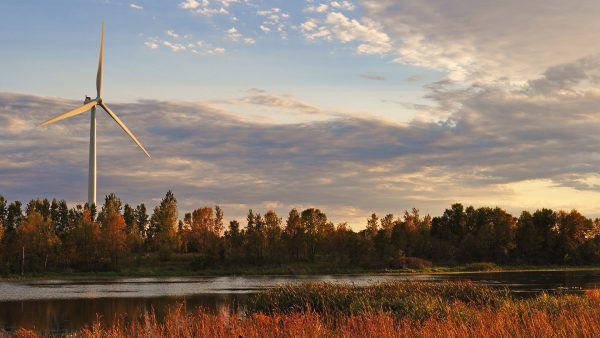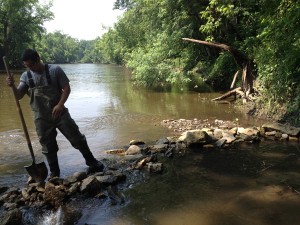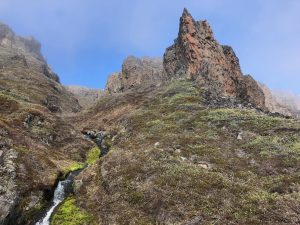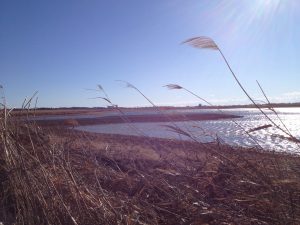Chemistry 363: Environmental Chemistry
The material and energy flow associated with earth and its bounty of diverse life forms makes for a compelling and fascinating area of study. For the last two decades I have been examining pieces of this dynamic from a variety of lenses: surface water quality, material life cycle analysis, land use and whole watershed analysis, sustainability efforts in higher education, energy conservation and community based research. Materials and energy exist as fundamental components of human cultural and societal systems, and they are inextricably intertwined with earth’s physical and biological systems and cycles. You cannot separate one from another, and the environmental community has recognized this, leading to an array of intersectional studies.
As a interdisciplinary scientist with specific training in chemistry, I have opportunities to join with students to dive deeper into the specifics of this complex and feedback rich learning space, using tools that cut across the arts, humanities, social sciences, and physical and natural sciences. Moreover, in addition to the research work I collaboratively conduct in this space, once in a while I get to offer some specialized courses, specifically an upper level Environmental Chemistry course, where we focus our efforts at considering those socio-cultural centered material and energy resources from inquiry rooted in chemical processes and phenomena.
Course description
Our surroundings play a vital role that influences who we are as people – from genetic triggers to mental well-being. We rely on the environment for the air we breathe, the water we drink, the food we consume, and material resources for daily living. As human demands place additional pressure on finite energy and material resources the knowledge and understanding about the chemistry supporting the functions of the earth and its systems becomes increasingly critical. This course focuses on key concepts and tools employed by environmental chemists to develop deeper understanding of the chemical processes and phenomena associated with each of the earth’s compartments (atmosphere, lithosphere, and hydrosphere), chemical fate and transport, environmental toxicity, energy resources, and life cycle assessments. By making use of the primary literature we pay attention to the interplay of chemical cycles and chemical changes present as part of earth’s system and those induced or modulated by human activity.
Learning Objectives
You will…
- develop and synthesize explanations for the chemical processes associated with environmental compartments, environmental toxicology, chemical fate and transport, and green chemistry;
- effectively search for and assess published works in the environmental chemistry literature;
- express an understanding of contemporary work, both field and laboratory, as reflected in the environmental chemistry literature;
- propose an environmental chemistry related project suitable for external funding.
Selected Activities
- Journal club – each student will lead a 30 minute class discussion of a paper published within the last five years in the environmental chemistry literature.
- Environmental Chemistry leaders – each student will generate a 5-7 minute podcast that highlights the background and work of a current person in this area.
- Hosting guests – the class will hear from current practitioners in environmental science and discuss their work and conduct background readings relevant to it.
- Water & soil sampling – should weather and health conditions permit, we will get out in the field and try your hand at some sampling techniques
- Crafting a proposal – identify an environmental chemistry related question to interrogate and craft a short research proposal that seeks to answer it.
